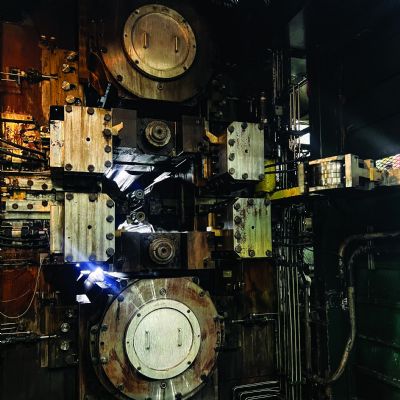 Brad Kuvin
Brad KuvinFeatherweighting Our Way to 54.5
May 1, 2016Comments
Talk automotive lightweighting, and the 800-lb. gorilla in the room—new standards that require automakers to, by 2025, nearly double fuel efficiency while cutting greenhouse-gas emissions in half—drives the conversation to new steels, increased use of aluminum and certainly the continued introduction of new metalforming and joining technology. These developments have undoubtedly contributed to the successful dieting underway in the automotive industry. However, as I speak to engineers within the industry, it’s becoming clear that current lightweighting techniques simply will not get us to the Promised Land—54.5 miles/gal. by 2025.
Warning: To achieve 2025 CAFE requirements means that designers must have plans in place by 2020—that’s less than 4 yr. from now.
Let’s put CAFE in perspective:
• In 2016, automakers must be producing vehicles with a corporate average fuel economy of around 34.5 miles/gal.
• To achieve 54.5 miles/gal. requires a 58-percent improvement in fuel economy.
• Experts estimate a 1- to 2-percent increase in fuel economy for every 100 lb. shaved from vehicle total weight. Do the math.
Yes, new engine technology, increased electrification and a few other factors impact fuel economy. However, it appears that to make goal will require removing (not trimming) several hundred pounds from current vehicle models. Strides are being made; take a look at senior editor Lou Kren’s article beginning on page 24 of this issue. He describes the redesigns of several 2016 models to incorporate more advanced high-strength steels, which have trimmed vehicle weight by as much as 300 lb. in some cases. But these achievements are little more than drops in the bucket. It’s time to stop talking lightweighting—carving 10 lb. here and 20 lb. there—and start talking featherweighting.
I’m told that major changes in structure design are needed, and that a traditionally risk-averse industry had better wake up to this reality. Consider a recent survey of automotive engineers, by WardsAuto and DuPont Automotive, regarding lightweighting strategies. It finds that 64 percent of engineers are working on adoption of new materials, 56 percent on engine efficiency, 46 percent on electrification, etc. However, less than 20 percent of these same engineers are confident that today’s material portfolio will allow the industry to meet 2025 CAFE standards. Where’s the emphasis on design creativity?
It looks like the you-know-what is about to hit the fan. We need design innovation like we’ve never seen before. It’s time for boldness, pioneering and bravery; there’s no time for risk aversion. The new decade will be here in the blink of an eye.
Technologies: Materials







